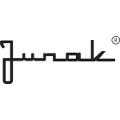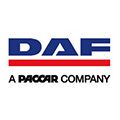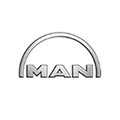06_Benefits to lessees beyond compliance and new opportunities for lessors with new standard IFRS16
The IASB published IFRS 16 Leases in January 2016 with an effective date of 1 January 2019. The new standard requires lessees to recognise nearly all leases on the balance sheet which will reflect their right to use an asset for a period of time and the associated liability for payments.
The new leases standard virtually every company uses rentals or leasing as a means to obtain access to assets and will therefore be affected by the new standard. Redefines commonly used financial metrics. The new requirements eliminate nearly all off balance sheet accounting for lessees and redefine many commonly used financial metrics such as the gearing ratio and EBITDA. This will increase comparability, but may also affect covenants, credit ratings, borrowing costs and your stakeholders’ perception of you.
The impact on a lessee’s financial reporting, asset financing, IT, systems, processes and controls is expected to be substantial. Many companies lease a vast number of big-ticket items, including cars, offices, power plants, retail stores, cell towers and aircraft. Therefore, lessees will be greatly affected by the new leases standard. The lessors’ accounting largely remains unchanged. However they might see an impact to their business model and lease products due to changes in needs and behaviours.
The new standard may result in renegotiations of existing leases to minimise the impact of the new leases standard. The elimination of off balance sheet accounting and increased administrative burden for leases might reduce the attractiveness of leasing.
Next to the external transparency over leases, the increased internal transparency within an entity may actually drive more economic lease decisions enable lease portfolio optimisation or provide for potential cost savings. Other changes in lessee needs and behaviours may include a desire to move to shorter lease terms or include more variable lease payments based on usage of an asset. Others may want to move to more service-type agreements rather than leases, a trend that already exists in markets but could be accelerated by the new standard.
Lessees may already engage in these renegotiations well before the adoption date to minimise the impacts of the new leases standard. However, entities considering such changes to their leases need to evaluate this carefully and consider all impacts, as these changes will often result in changes in economics, such as pricing and risks absorbed by an entity.
Nest steps:
- Lessees and lessors may need to consider renegotiating or restructuring existing and future leases.
- Business and legal structures supporting leases should also be reassessed to evaluate whether these continue to be effective (for example, joint ventures and special purpose entities).
- Lessor accounting remains largely unchanged from IAS 17 however, lessors are expected to be affected due to the changed needs and behaviours from customers which impacts their business model and lease products.
The effective date of IFRS 16 Leases is 1 January 2019. The new leases standard permits early application but it can’t be applied before an entity also adopts IFRS 15 Revenue from Contracts with Customers. A entity has to choose either a full retrospective approach or a modified retrospective approach to transition to the new standard. The selected approach has to be applied to the entire lease portfolio.
Contact:
Anna Wójtowicz
Senior Manager, PwC
wyślij wiadomość

























































